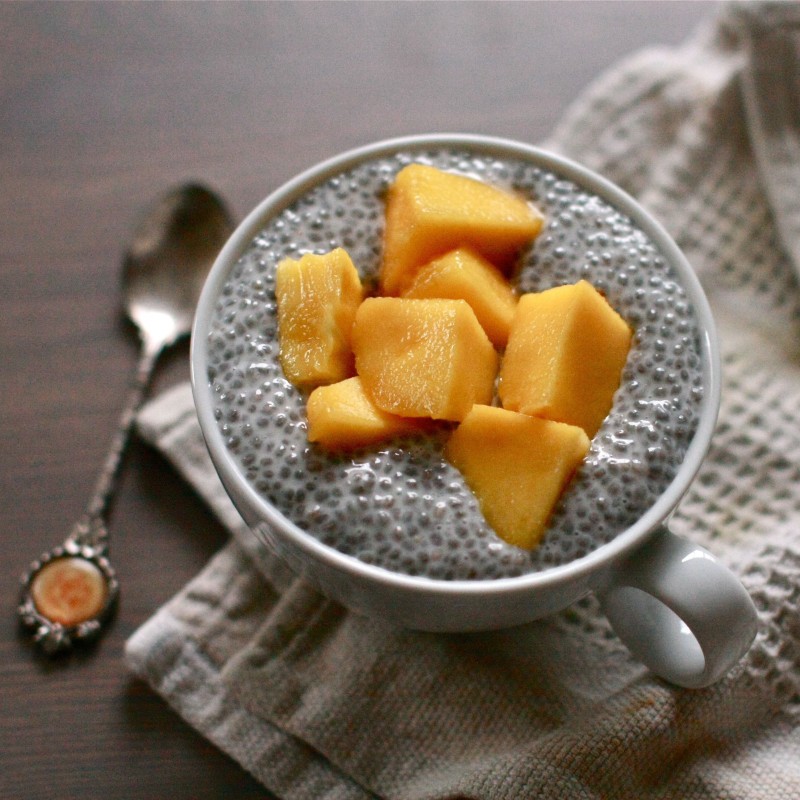




Chia is the edible seed of Salvia hispanica, a flowering plant in the mint family (Lamiaceae) native to Central America, or of the related Salvia columbariae of the southwestern United States and Mexico. Chia seeds are oval and gray with black and white spots, having a
Chia is the edible seed of Salvia hispanica, a flowering plant in the mint family (Lamiaceae) native to Central America, or of the related Salvia columbariae of the southwestern United States and Mexico. Chia seeds are oval and gray with black and white spots, having a diameter around 1 millimetre (0.04 in). The seeds are hydrophilic, absorbing up to 12 times their weight in liquid when soaked and developing a mucilaginous coating that gives chia-based creams and beverages a distinctive gel texture. There is evidence the crop was widely cultivated by the Aztecs in pre-Columbian times, and was a staple food for Mesoamerican cultures. Chia seeds are cultivated on a small scale in their ancestral homeland of central Mexico and Guatemala, and they are cultivated commercially throughout Central and South America.
Typically, chia seeds are small flattened ovals measuring on average 2.1 mm × 1.3 mm × 0.8 mm (0.08 in × 0.05 in × 0.03 in), with an average weight of 1.3 mg per seed. They are mottle-colored with brown, gray, black, and white. The seeds are hydrophilic, absorbing up to 12 times their weight in liquid when soaked; they develop a mucilaginous coating that gives chia-based creams and beverages a distinctive gel texture.
Chia (or chian or chien) has mostly been identified as Salvia hispanica L. Other plants referred to as "chia" include "golden chia" (Salvia columbariae). The seeds of Salvia columbariae are used medicinally and for food.
In the 21st century, chia is grown and consumed commercially in its native Mexico and Guatemala, as well as Bolivia, Argentina, Ecuador, Nicaragua, and Australia. New patented varieties of chia have been developed in Kentucky for cultivation in northern latitudes of the United States.
Seed yield varies depending on cultivars, mode of cultivation, and growing conditions by geographic region. For example, commercial fields in Argentina and Colombia vary in yield range from 450 to 1250 kg/ha. A small-scale study with three cultivars grown in the inter-Andean valleys of Ecuador produced yields up to 2300 kg/ha, indicating that favorable growing environment and cultivar interacted to produce such high yields. Genotype has a larger effect on yield than on protein content, oil content, fatty acid composition, or phenolic compounds, whereas high temperature reduces oil content and degree of unsaturation, and raises protein content.
Dried chia seeds contain 6% water, 42% carbohydrates, 16% protein, and 31% fat (table). In a 100-gram amount, chia seeds are a rich source (20% or more of the Daily Value, DV) of the B vitamins, thiamin and niacin (54% and 59% DV, respectively), and a moderate source of riboflavin (14% DV) and folate (12% DV). Several dietary minerals are in rich content, including calcium, iron, magnesium, manganese, phosphorus, and zinc (all more than 20% DV; table).
The fatty acids of chia seed oil are mainly unsaturated, with linoleic acid (17–26% of total fat) and linolenic acid (50-57%) as the major fats.
 Reviews (0)
Reviews (0)